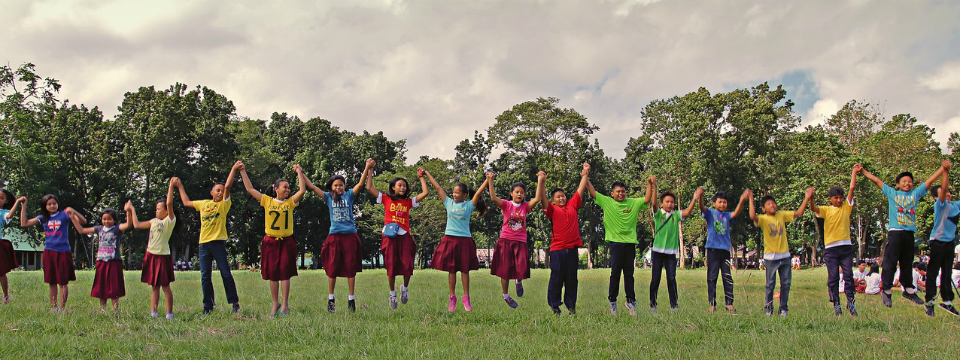New research highlights importance of mentor expectations in sustaining relationships
 Spencer, R., Drew, A. L., & Kanchewa, S. S. (2017). Girls (and boys) just want to have fun: A mixed-methods examination of the role of gender in youth mentoring relationship duration and quality. Journal of Primary Prevention. doi: 10.1007/s10935-017-0494-3
Spencer, R., Drew, A. L., & Kanchewa, S. S. (2017). Girls (and boys) just want to have fun: A mixed-methods examination of the role of gender in youth mentoring relationship duration and quality. Journal of Primary Prevention. doi: 10.1007/s10935-017-0494-3
Summarized by Justin Preston
Background
The findings from the literature on youth mentoring have shed light on many aspects of the relationship, but one area has continued to puzzle researchers: female community-based relationship were at a higher risk for ending prematurely than male relationships. Given that the benefits of mentoring are more likely to be impactful in relationships that last for at least a year, this is a critical area to investigate.
It is possible that one source of this discrepancy lies rooted in two distinct areas of expectations: those of mentees and those of mentors. In the former, researchers have speculated that the different patterns in relational styles and help-seeking behaviors between boys and girls are likely to influence the mentoring process. That is, because girls are typically associated with a greater emphasis on emotional intimacy and self-disclosure in their peer relationships than boys, these behaviors and expectations may influence the developmental path of the mentoring relationship.
Other researchers have found that mentor expectations can play a significant role in relationship duration. When initial expectations of the relationship are not met, some mentors can be discouraged or disappointed in the progress they may or may not be making in establishing a relationship with their mentee. This can lead to the mentor withdrawing from any meaningful engagement in the mentoring relationship.
The goal of the present study was to “investigate the role of gender in mentoring relationship duration and quality…examining same-gender matches.” The researchers hoped to answer questions around mentor and youth age differences, gender differences, and differences in relationship strength by duration match configuration.
Methods
Participants were mentor-youth pairs participating in a longitudinal study of mentoring relationships. There were 67 gender-matched pairs, with 37 (55%) being female pairs. Administrative data was utilized to determine match length, and data was collected from both the mentor and mentee at various time points.
At the start of the study, mentees were between 9-15 years of age (M = 12.32, SD = 1.41). Of the youth participants, 46% identified as Black (including African and Caribbean), 19% as Hispanic/Latino, 16% as White, and 13% as multiracial or with other backgrounds. Three of the youths did not designate their race/ethnicity. The mother was the main guardian for the majority of the children (87%), and most (84%) of the guardians in the study were single parents.
Participants were recruited through affiliates of Big Brothers Big Sisters of American (BBBSA). Each participant completed a survey and qualitative interview at the time the match was made to serve as baseline data. Interviews were conducted 3 and 6 months after the match was made. Data collected included information on match length, youth-guardian relationship quality, and match strength
Results
Initial tests detected no significant gender difference in mentor age, but found that female mentees in the study were significantly older than the male mentees. Male mentees also reported stronger relationships with their guardians prior to the beginning of their mentoring relationship than their female peers. Guardians, however, did not report any significant gender differences in their relationships with their children.
At the three-month point, male mentors reported significantly stronger mentoring relationships than females, and, similarly, male mentees reported stronger mentoring relationships than did female mentees.
The researchers also found a significant gender difference in whether a match lasted at least one year, with 79% of male matches lasting at least a year, while only 50% of the female matches went for at least one year.
Implications for Mentors and Programs
As the authors note, “female matches in our sample were more likely to end prematurely than were the male matches. Also consistent with previous research, the female youth in our sample reported having lower quality relationships with their parent or guardian than did the males, suggesting that female youth in mentoring programs may be more relationally vulnerable.”
Further, males whose matches lasted at least 1 year reported stronger relationships with their guardians than females whose matches lasted either less than or greater than one year. These differences were not reflected in the guardians’ assessments of their youth, as no significant gender differences were found for the guardian-reported data.
According to the authors, “These findings suggest that male and female mentors may be bringing expectations for their mentoring relationships that are similar to those they hold for their interpersonal relationships more generally. The patterns observed in this study are consistent with those found in the interpersonal relationship literature more generally, where satisfaction with a relationship depends not on objective measures but on comparison with an ideal relationship as well as with other relationship experiences.”
There may be several explanations for why female mentoring relationships were shorter in this sample, such as female youth being more relationally vulnerable (as indicated by their lower attachment to their guardians), and that female mentors held higher expectations for emotional closeness which could result in disappointment with the relationship when these expectations were not met at the desired pace.
One step programs could take, the authors note, is that programs “seeking to develop longer-term matches may need to help female mentors temper their expectations for how quickly emotional closeness may develop and to more closely align their expectations with those of their mentees. Focusing so intently on the confidant role of a mentor, female mentors may be overlooking or underappreciating the important and developmentally appropriate role that simply engaging in mutually enjoyable activities with prosocial adults plays in the lives of children and adolescents.”
Another step would be for programs to help tailor the expectations of their mentors to the developmental needs and level of their mentees. As the authors note, “[M]eaningful relationships with youth in middle childhood and early adolescence are formed and carried out through mutual engagement in shared activities.” This could mean that more time spent “doing” things could serve as a powerful starting point for establishing lasting mentoring relationships.
To access the original article, click here.









